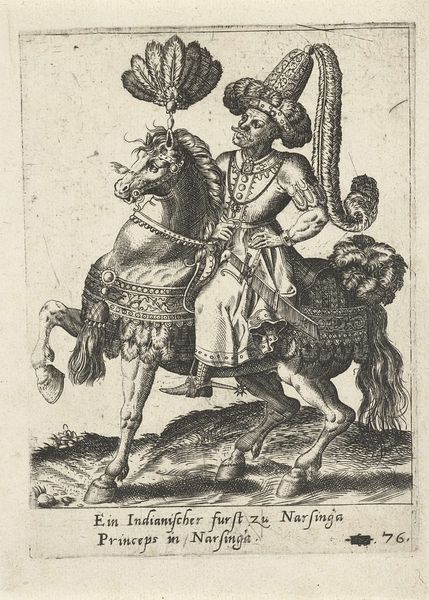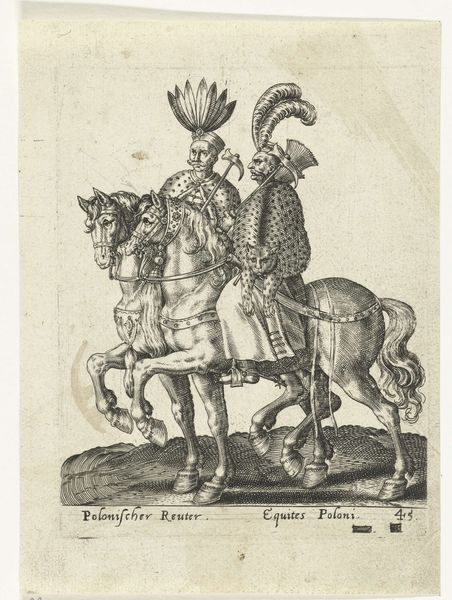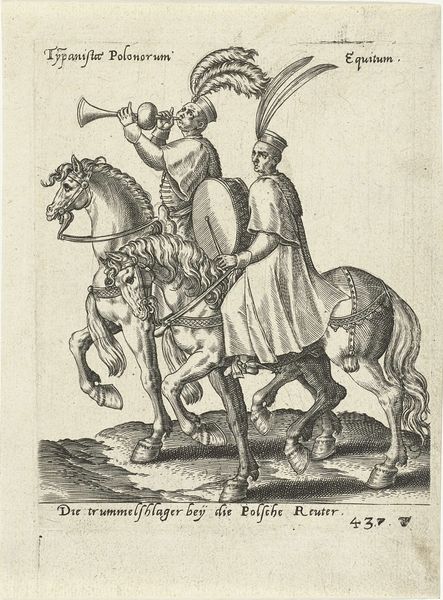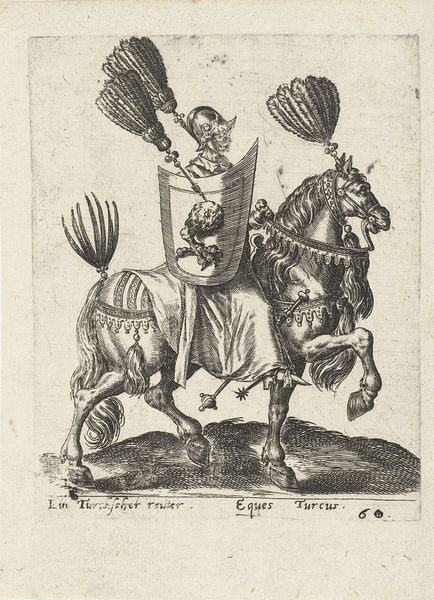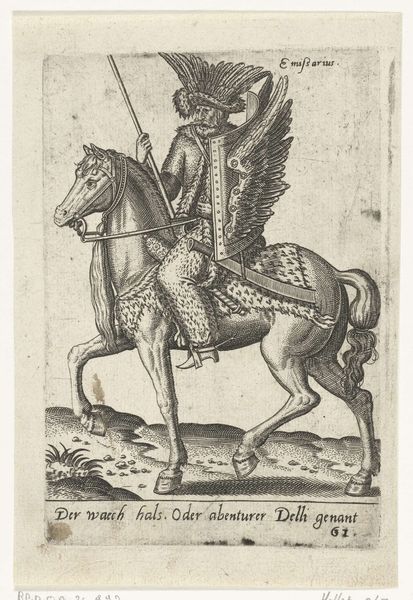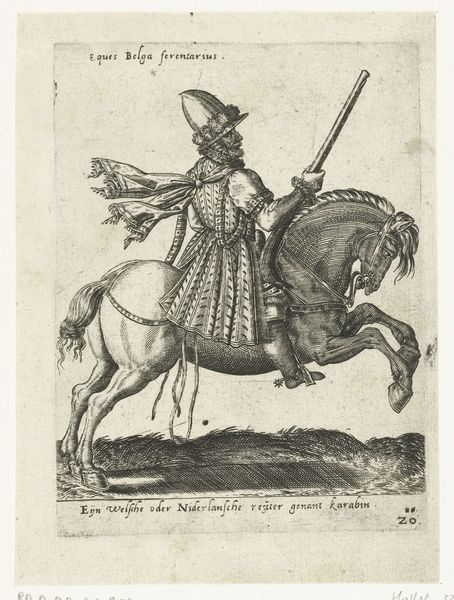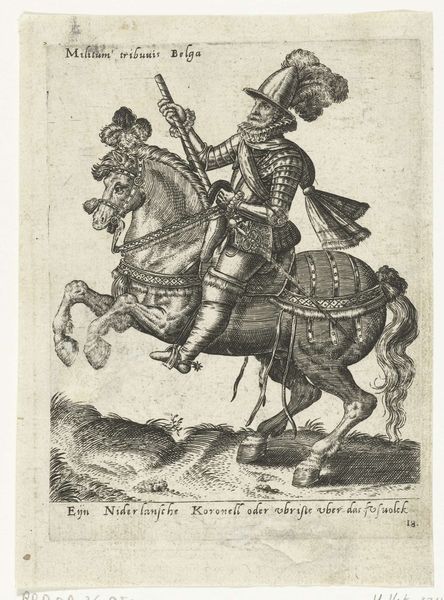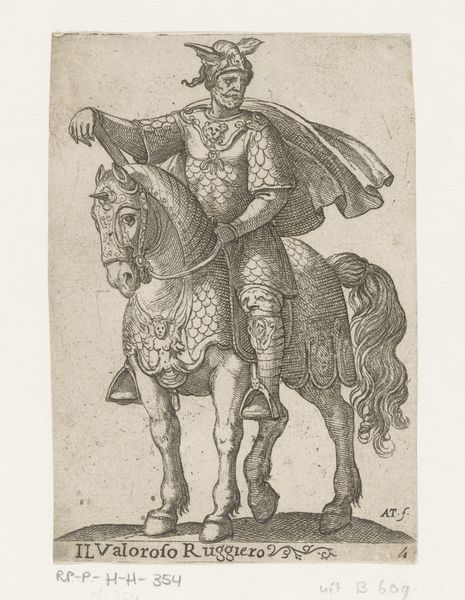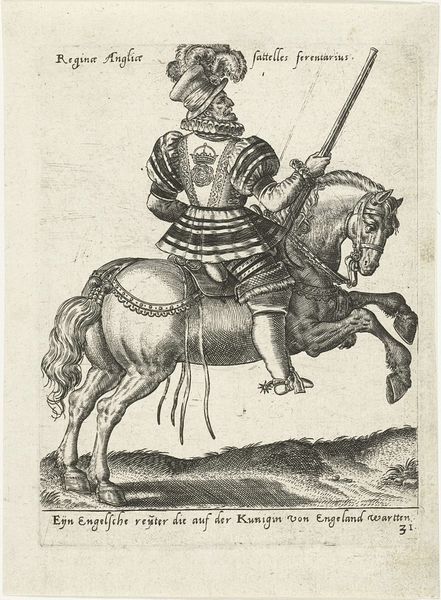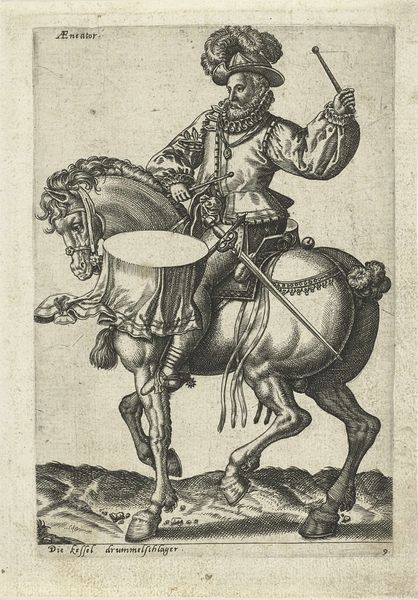
print, engraving
#
portrait
# print
#
pen sketch
#
11_renaissance
#
history-painting
#
engraving
Dimensions: height 147 mm, width 110 mm
Copyright: Rijks Museum: Open Domain
Editor: This is Abraham de Bruyn's "Lithuanian Rider," an engraving from 1577. I'm struck by the details of his dress and how it presents an image of foreign opulence; however, the landscape feels unrefined, like a pen sketch. What does this print say to you? Curator: This image is steeped in the complexities of cultural representation and power. It's important to recognize that images of the “other” – those from different cultures – were often filtered through the lens of the dominant culture, perpetuating stereotypes and power dynamics. What do you notice about the rider's posture? Is there an element of spectacle involved? Editor: I see how his dress is so detailed but you’re right, he's more posed than actively riding. He's presented almost as an exhibit, but what would that signify? Curator: Consider the history of Lithuania during this period and who would commission this kind of portrait. These early prints functioned almost as ethnographic documents. Often, such depictions emphasized the "exotic" or "foreign" to reinforce a sense of Western European superiority or to fuel political agendas. We have to question whose story is really being told here and for what purpose. The context in which an artwork is viewed inevitably affects its reading. What kind of implications are suggested? Editor: So, the seemingly simple portrait speaks volumes about intercultural relations and maybe the use of visual culture as a tool to distinguish identities… Thank you, I see much more complexity now! Curator: Precisely! Art gives us a window into both the past and present if we’re willing to look critically at who is doing the looking. It also enables an active conversation around identity and political discourse, and how to engage with social structures today.
Comments
No comments
Be the first to comment and join the conversation on the ultimate creative platform.
